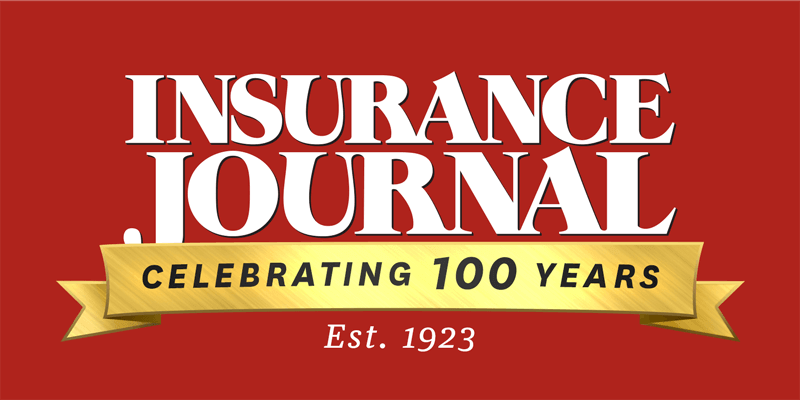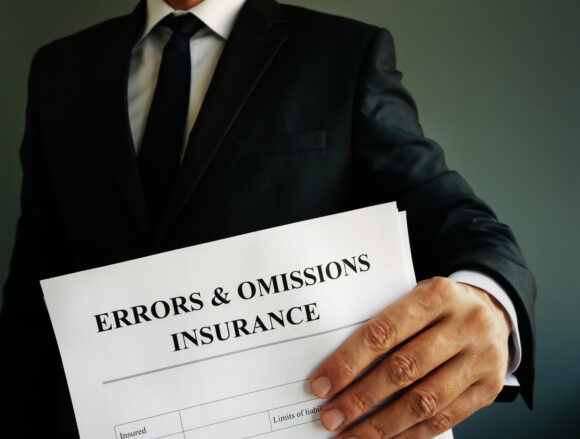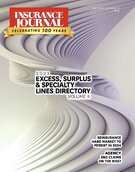Through my recent discussions with clients and carriers, it is clear to me that agencies are incurring substantially more errors and omissions (E&O) claims. A significant difference exists between the number of claims agency E&O carriers are seeing and the actual number of claims that are occurring because many agencies have made the decision to pay the smaller claims on their own rather than risking their E&O coverage/higher premiums.
As a partial aside, I fully understand the reasoning that causes agencies to pay small E&O claims. However, I strongly recommend that they do not pay these claims unless they are dead certain the claim is property only and is small. I have a long list of examples of agencies that paid claims they thought were small, or were property only, or were sure that no plaintiff attorneys would ever be involved and ended up incurring large E&O claims they had to pay because they had not submitted the original claim to their carrier.
Many reasons exist for the recent increase in E&O claims.
1. Staff Turnover. Almost everyone has experienced or seen significant staff turnover during the last three years. Staff turnover, all else being equal, increases the probability of E&O claims. An agency incurs increased exposure during the time period when they are training a new employee. In addition, when an employee leaves, the agency loses the account knowledge at the staff level unless the agency has extremely good procedures and documentation in place. Few agencies practice quality at the required level to avoid this deficiency.
2. Training. Most agencies train employees through on-the-job training (OJT). In my experience, OJT can work quite well when an agency has relatively good procedures. However, OJT fails when an agency does not have good procedures in place or the producers and staff do not consistently follow those procedures. The major problem that results is that the new employee does not know whose procedures to follow because everyone uses their own procedures.
Consider the case of an agency that has relatively good procedures. Despite the fact that many carrier personnel and agency producers do not think an account manager’s job is all that difficult, the job entails a lot of detail. I do not know that I have ever seen a procedures manual that contained all the required details. If one exists, it would likely be so large that it would not be usable.
People can learn a lot by watching, listening to, and learning all the unwritten but critical nuances. When training employees remotely an agency cannot achieve this required level of training. If the agency also has poor procedures, the successful training of a new employee remotely is an utter impossibility.
The net result is a material increase in E&O errors.
3. Poor Claims Service by Carriers. One hundred percent of the agencies I have surveyed have said claims service has materially deteriorated over the last three years. I have reviewed published surveys that have supported the agencies’ complaints. Poor claims service is a causal factor in the increasing number of E&O claims because agency personnel tend to try too hard to help their clients get their claims paid. They accidentally cross the line and advise their clients in a manner that violates the agency’s carrier contract.
As frustrating as poor claims service is, make sure everyone in your agency is educated as to how far they can go when helping clients with a claim.
In particular, an agent can never, ever advise an insured that a claim is or is not going to be paid.
4. Carrier Lawsuits. Carriers are suing their agents more often, or at least that is the way it seems. Some of my agency clients have suffered subrogated claims by carriers that involve very technical clauses that have absolutely nothing whatsoever to do with the claim. A good example that I have seen several times involves the prefilled application data provided by the carrier. The carrier, it turns out, is not responsible for the data they provide. If the data is wrong, the agent did not correct the data and a large enough claim results, some carriers are paying the insureds’ claims and suing the agent.
Another example involves a variety of “change in conditions” that have not been reported to the carrier by the agency. The changes often have absolutely nothing to do with the insured’s claim and even if the changes had been reported, the claim would still have occurred. Yet the carriers are using this “out” to subrogate against their own agents.
5. Increased Workloads. In this hard market, with all the employee turnover, workloads are simply too high in many agencies. The result is that employees make more mistakes and/or agencies begin cutting corners such as not checking renewal policies. The solution is simple to identify, but in this labor market it is extremely difficult to execute successfully.
6. Surplus Lines. In this hard market, agents are moving accounts to surplus lines. This increases E&O exposures on multiple levels, especially if an agency has a training weakness, procedure weakness, and/or a new employee integration weakness. When moving an account to surplus lines, the agency owes additional care to the insured, especially, in most instances, the duty to notify and explain which coverages have been lost. Those disclosures are not always happening.
Additionally, the agency needs to review the forms more carefully because it is surplus lines. A large dark hole of ignorance exists relative to an agent’s duty to insureds when placing surplus lines accounts. I find most newer employees do not know about these additional duties. They do not understand that surplus lines markets do not have a duty to inform agents or insureds of reductions in coverage or even when the promised coverages are not included in the policy, and as a result employees are not checking policies.
You must always check surplus lines policies. The failure to do so is an E&O claim waiting for an opportunity to occur.
Mitigation
What is the best way to mitigate E&O exposures? Use coverage checklists. Next, have high quality procedures in place and make certain everyone is following those.
How do you know if you have good procedures or if your employees are following those procedures? Get an E&O audit.
This recommendation may be self-serving because I am an approved E&O auditor with many E&O carriers. But having completed so many E&O audits, I know an audit is an excellent solution. Many times, agency owners have hired me and swore their staff had the education, the agency had the right procedures, and that everyone was following those procedures.
However, the audits showed their staff did not have enough education, their procedures were materially inadequate, and in some cases, their staff did not even know the agency had procedures.
If you want to mitigate your E&O exposures, address these points, and take the recommended steps, get an E&O audit. Some E&O carriers offer large premium savings if you have an audit making the audit even more worthwhile.
Topics Trends
Was this article valuable?
Here are more articles you may enjoy.



 Heritage Insurance Reports Third Straight Quarter of Profit After Shedding Policies
Heritage Insurance Reports Third Straight Quarter of Profit After Shedding Policies  Zurich American Off the Hook on Harvard’s Legal Costs in Affirmative Action Case
Zurich American Off the Hook on Harvard’s Legal Costs in Affirmative Action Case  Commercial Property Loans Are So Unappealing Banks Trying to Dump Them
Commercial Property Loans Are So Unappealing Banks Trying to Dump Them  Wall Street WhatsApp, Texting Fines Exceed $2.5 Billion
Wall Street WhatsApp, Texting Fines Exceed $2.5 Billion 



